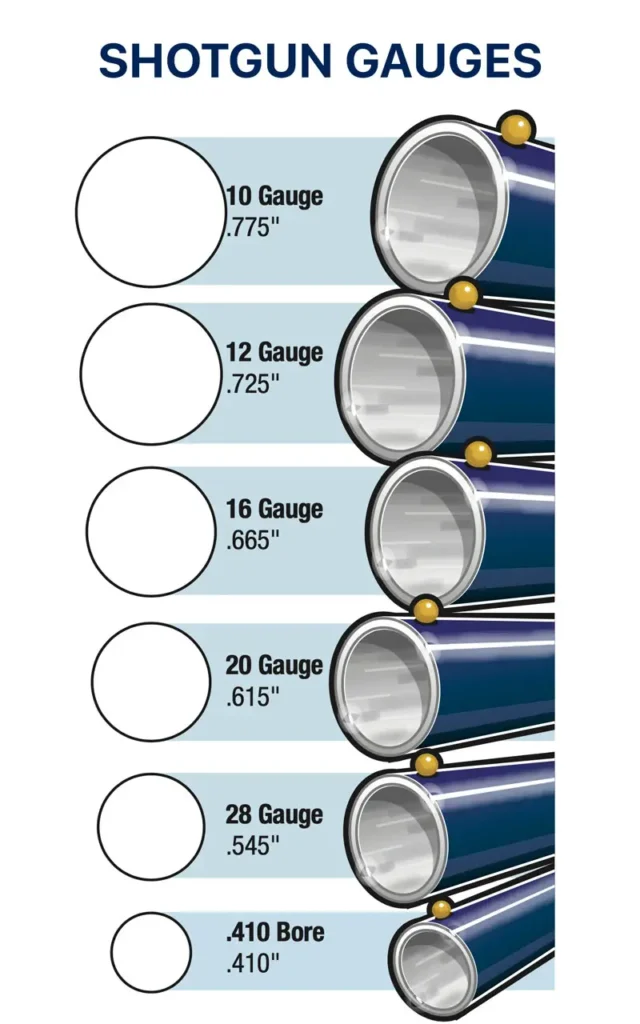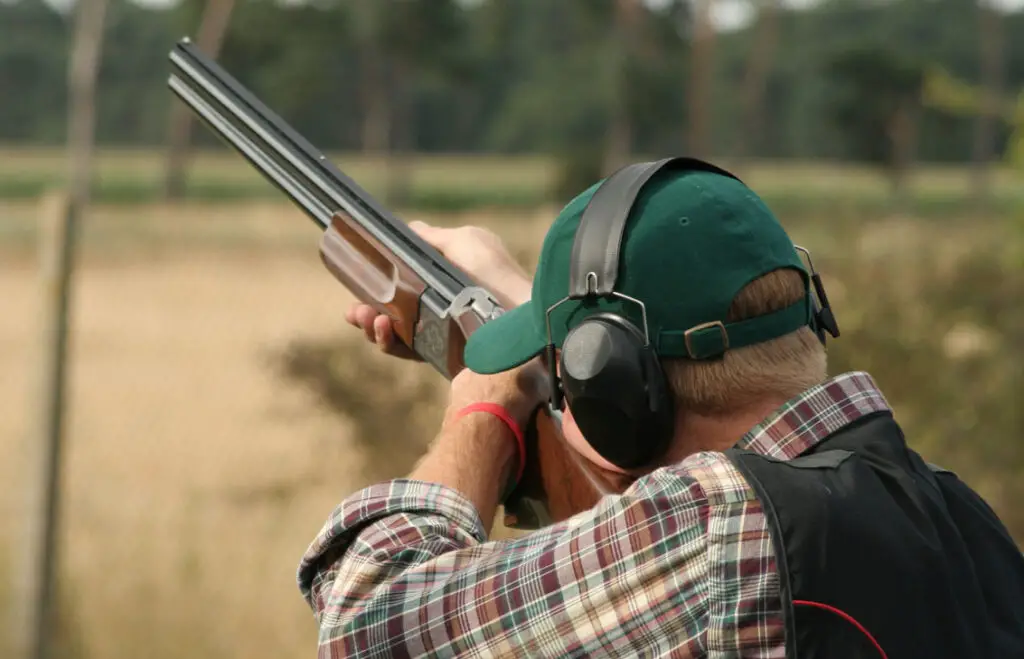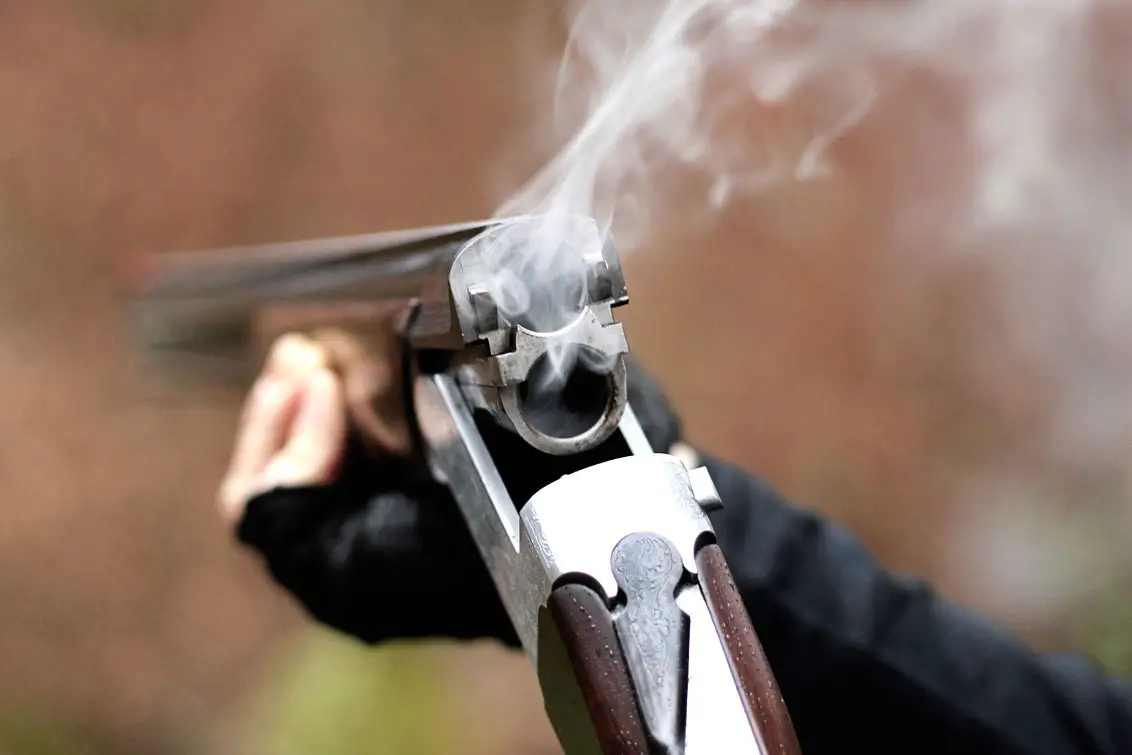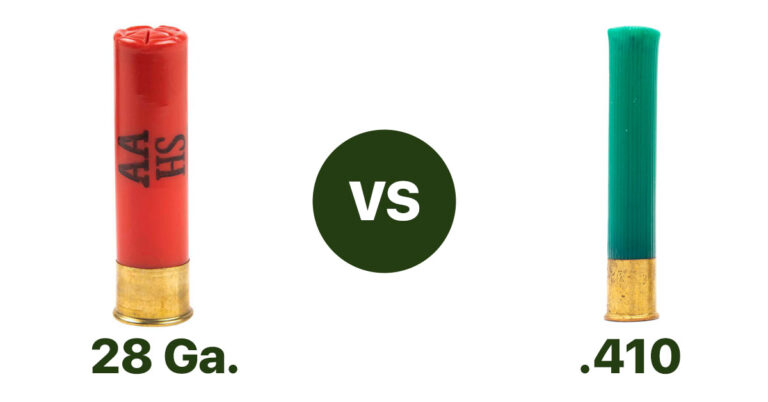Ever found yourself in a quandary, trying to choose between the 28 Gauge and 410 Bore shotguns, like a kid in a candy store? Worry not, we’ve all been there! These small bore shotguns, with their unique traits and capabilities, are often the topic of heated debates amongst shooting enthusiasts. So, whether you’re an amateur looking to buy your first shotgun or a seasoned hunter seeking to add a new piece to your collection, buckle up! We’re about to embark on a roller-coaster ride through the world of “28 gauge vs 410” shotguns.
Key Takeaways
28 Gauge and 410 Bore shotguns have their own unique advantages, so it’s up to personal preference.
28 Gauge shells offer more shot and powder capacity than the 410 Bore shell for greater pellet spread & hitting power.
Both gauges are great choices for beginners due to low recoil, but try them out first to find the perfect fit!
28 Gauge and 410 Bore Basics: Understanding the Contenders
In terms of power, the 28 Gauge outperforms in the realm of small bore shotguns. It holds more shot pellets and boasts a wider bore, delivering more energy to the target compared to the 410 Bore. The 0.140 inches wider bore diameter of the 28 Gauge makes a world of difference, affecting how much shot and energy it can deliver. However, the popularity of these shotguns is like a seesaw. While the 28 Gauge holds a special place in the hearts of those looking to improve their shooting skills, it’s not as popular as the 12 or 20 gauge. On the other hand, both the 28 gauge and 410 bore have found their niche in skeet shooting, upland hunting, and rabbit hunting.
Deciding between the 28 Gauge and 410 Bore shotguns is akin to choosing between an apple and an orange. It all boils down to personal preferences and needs. Factors to consider include:
The type of game you intend to hunt
Your size
Power preferences
How much recoil you can handle
Would you prefer the 28 Gauge, with its higher velocity and muzzle energy, ideal for larger game? Or would the 410 Bore, with its less recoil, be better suited for smaller shooters or those sensitive to recoil?
The Tale of Two Bores: A Comparative Overview

In the world of shotguns, the 28 Gauge plays the role of a big brother to the 410 Bore. With its ability to hold more steel shot and powder, it packs a little more kick and range. However, if you’re a smaller or recoil-sensitive shooter, the 410 Bore might be your perfect companion. Being one of the small bore shotguns, it’s lighter and has less kick, making it a good choice.
In search of a small-bore shotgun that strikes a balance between power and range? Then the 28 Gauge might just fit the bill. It’s like a powerful yet easy-to-shoot package wrapped in a bow. But let’s not forget the 410 Bore’s humble beginnings. It has traditionally been used to introduce new and young shooters to shotguns and for varmint control.
Shotgun Shell Showdown: Ammo Specifications and Performance
One of the main distinctions between the 28 Gauge and 410 Bore is their ammo capacity. The 28 Gauge shells can hold more shot and powder than their 410 Bore counterparts, influencing the number of pellets that can be fired and how they spread out. This directly impacts the muzzle velocity of the shot.
Imagine pouring a box of marbles down a hill. The more marbles, the more chaos, and impact. It’s the same with the higher pellet count in 28 Gauge shells, which can potentially send four times as many pellets downrange compared to 410 Bore shells. This affects both pattern density and hitting power. The shell length also plays a pivotal role in the amount of shot and powder that can be held.
The Recoil Factor: Gauge Impact on Shooter Comfort
Recoil – the nemesis that every shooter must contend with. When it comes to 28 Gauge and 410 Bore shotguns, they both have significantly less kick compared to their larger counterparts. The 28 gauge has about half the recoil of a 12 gauge and the 410 bore about two-thirds. But interestingly, the 410 Bore feels even lighter due to its use of lighter loads, like turkey loads.
However, you can switch to low velocity ammo to reduce the kick of a 28 Gauge shotgun, making it even more comfortable and easier to handle. The 410 Bore has earned a reputation as a great training shotgun for children due to its light recoil. It’s like a gentle introduction to the world of shooting, making the experience positive without overwhelming a newbie.
Sporting Suitability: Which Gauge Wins for Skeet and Clays?

In the realm of sports, opinions among professional skeet shooters are split between the 28 Gauge and 410 Bore. Some find the 28 Gauge better and more fun, while others find the 410 Bore challenging yet rewarding.
It’s like a thrilling football match where the 28 Gauge and 410 Bore are two equally matched teams, each with their unique strengths and strategies.
From Upland Game to Sporting Clays: 28 Gauge Versatility
The 28 Gauge shotgun, akin to a Swiss Army knife, excels in upland game hunting. Lightweight, easy to handle, and delivering a powerful shot, it’s a favorite among bobwhite quail, ruffed grouse, and woodcock hunters. The versatility of the 28 Gauge ammunition contributes to its popularity. It’s like a chameleon, able to adapt to different shooting situations by customizing the load with different shot sizes for different game. For those interested in a shotgun cartridge comparison, the 28 Gauge stands out as a top choice.
This versatility extends to clay shooting. The 28 Gauge strikes a perfect balance between shot capacity and recoil, making it a popular choice for breaking clays at different distances.
The Light Touch: 410 Bore in Target Shooting
In the world of target shooting, the 410 Bore shotgun is comparable to a featherweight champion. Its lower recoil makes it a favorite among shooters looking for a lighter touch. From steel targets to clay targets, the 410 Bore shotgun can handle them all, making it a versatile choice for a variety of shooting sports.
Despite its smaller size, the 410 Bore proves that size doesn’t always matter. It’s great for small game and birds when you need to be precise at shorter distances.
Hunting with a Small Bore: Evaluating 28 Gauge vs 410 for Game

Venturing out on a hunt with a small bore shotgun, such as the 28 Gauge or 410 Bore, feels similar to embarking on an adventure with a reliable partner. These shotguns are often used for upland game birds like grouse, pheasant, and quail. In recent times, turkey hunters are moving towards smaller gauges as TSS-loaded shotgun shells can easily bring down a turkey with 410 or 28 gauge shells.
The type of ammunition used for hunting upland birds with these shotguns is usually lead shot. However, the effective hunting range for these shotguns is usually around 35 yards or less. Some highly skilled hunters have managed to make successful kills at around 40-45 yards.
Chasing Feathers: Bird Hunting with the 28 Gauge
The 28 Gauge shotgun could be considered a bird hunter’s top ally. It performs exceptionally well in various bird hunting situations, especially for upland game species like:
quail
doves
woodcock
ruffed grouse
It’s like a versatile tool that can be used for different tasks. You can customize the load with different shot sizes for different game and shooting situations, making it the perfect partner for bird hunting.
The 28 Gauge shotgun strikes a perfect balance between shot capacity and recoil, making it an ideal choice for bird hunting. However, it might not be the best choice for bigger birds.
Varmint Control: Is the 410 Bore Up to the Task?
Despite its diminutive size, the 410 Bore shotgun delivers a strong blow in scenarios of varmint control and small game hunting. Its penetration power at ranges up to 30 meters or around 30 yards makes it perfect for small game and birds. But when it comes to shooting varmints, how far should you be? Well, when doing varmint control with a 410 Bore shotgun, you can usually hit them from up to 30 meters or around 100 feet away.
The type of ammunition you choose is also important. Some great options for varmint hunting with a 410 Bore are:
Hevi-Shot’s Heavy Bismuth shotgun ammo
Federal Heavyweight
Hevi Shot Hevi-18
Boss Tom
Remington Premier TSS
Self-Defense Scenarios: Can Smaller Gauges Be Effective?
The practicality of smaller gauge shotguns such as the 28 Gauge and 410 Bore for self-defense scenarios is a matter of ongoing discussion. These shotguns are generally considered to have less stopping power compared to larger gauges like 12 or 20. While the 410 Bore may have better stopping power than certain handguns, its effective spread and stopping power are still less compared to larger gauges.
If you’re using a 28 gauge or 410 bore shotgun for self-defense, your best bet would be 00 Buckshot and slugs. They’re the most effective for stopping power and penetration in self-defense situations. In recent years, the 410 Bore has gained popularity as a self-defense choice, especially in compact revolvers like the Taurus Judge and the Smith & Wesson Governor.
Home Defense Dynamics: Assessing the 28 Gauge
For home defense purposes, the 28 Gauge shotgun may not be your initial preference. It’s not as powerful as larger gauges with options for buckshot or larger shot sizes, which are better for home defense situations. However, if the 28 Gauge is all you got, it can still help you defend your turf. But it might not be the best option out there.
The 410 Bore: A Concealable Companion?
In the sphere of self-defense, the 410 Bore shotgun functions much like a concealed weapon. Its small size and light recoil make it a popular choice, especially in compact revolvers like the Taurus Judge and the Smith & Wesson Governor. However, it’s not without its challenges. The 410 Bore has:
a short range
not much stopping power
limited ammo choices
might not do so well against tough opponents
But with the right ammo and good aim, it can still be effective for self-defense.
Economic Aspects: Ammo Cost and Availability
In terms of cost, you can expect to pay around $0.25 per round of 28 Gauge ammo, while 410 Bore ammo typically costs about $0.60 per round. However, the 410 Bore ammo is easier to find compared to the 28 Gauge. The 410 Bore shotgun has way more options for different types and brands of ammo, giving consumers a lot more to choose from.
To save some cash on ammo for these shotguns, buyers should shop around and think about buying in bulk when they come across a good deal.
Price Points: Weighing the Cost of 28 Gauge vs 410 Ammunition
On average, 28 Gauge shotgun ammo sells for approximately $40 for a box of 250 rounds, whereas 410 Bore shotgun ammo can range from $10 to $30 per 25-round box. However, there’s usually not a big difference in production costs between 28 Gauge and 410 Bore ammo as they’re made using similar manufacturing processes.
Finding Your Rounds: Navigating Ammo Availability Challenges
Locating 28 Gauge and 410 Bore ammunition can feel akin to a search for a needle in a haystack. They’re not as easy to find and usually cost more than the more common gauges. However, the 410 Bore is easier to find than the 28 Gauge because it’s more popular. The smaller size of the 410 Bore may also make it seem more expensive.
The availability of 28 Gauge and 410 Bore shotgun ammo depends on factors such as popularity, demand, and size.
The First Shotgun Debate: Which Gauge is Best for Beginners?
The discussion surrounding the ideal gauge for a beginner’s inaugural shotgun resembles an ongoing tug-of-war. Smaller gauges like the 20 gauge or .410 are usually recommended for beginners due to their less recoil and smaller size. However, the 28 Gauge and 410 Bore each have their unique strengths that make them suitable for beginners.
Your needs and preferences will ultimately determine which shotgun is the best fit for you.
Starting Small: The Case for the 28 Gauge as a Starter Gun
The 28 Gauge shotgun could be likened to a patient instructor for beginners. It’s lightweight, easy to handle, and has low recoil, making it perfect for newbies. This shotgun offers good control and accuracy, which are vital for beginners.
Gentle Introduction: Why Some Opt for the 410 Bore
With its reduced recoil and compact size, the 410 Bore shotgun offers beginners a gentle initiation into the realm of shooting. It’s perfect for those looking for a lighter touch. Although it’s not as powerful or effective at longer ranges as bigger shotguns, it’s great for small game and birds when you need to be precise at shorter distances.
Final Thoughts: Settling the Score Between 28 Gauge vs 410
The decision between a 28 gauge and a 410 bore shotgun ultimately hinges on your specific requirements and preferences in a small-bore shotgun. Whether you’re a fan of the versatile and reliable 28 Gauge shotgun or the light and easy-to-use 410 Bore, both shotguns have their unique strengths and weaknesses. It’s like choosing between a rock and a hard place.
However, trying both shotguns before making a decision can help you find a shotgun that fits you like a glove.
Summary
In the grand scheme of things, both the 28 Gauge and 410 Bore shotguns have their unique strengths and weaknesses. Whether it’s the power and versatility of the 28 Gauge or the light recoil and ease of use of the 410 Bore, choosing the right shotgun ultimately boils down to understanding your needs and preferences. So, whether you’re a beginner looking for your first shotgun or an experienced shooter seeking to add a new piece to your collection, remember to always aim for a shotgun that best suits your needs and shooting style.
Frequently Asked Questions
Is a 410 the same as a 28 gauge?
No, the 410 bore is much larger than a 28 gauge – a 410 has a 0.410” diameter bore while a 28 gauge has a 0.140” diameter bore, making the 28 gauge more powerful.
What are the differences in power and bore size between the 28 Gauge and 410 Bore shotguns?
The 28 Gauge shotgun has more power and a wider bore size than the 410 Bore, allowing it to hold more shot pellets and deliver more energy to the target.
How much does ammunition for the 28 Gauge and 410 Bore shotguns usually cost?
Ammunition for 28 Gauge shotguns typically costs around $0.25 per round, while 410 Bore ammo usually goes for about $0.60 per round. Prices can vary depending on the type.

Born in rural Texas, Logan has been a passionate gun enthusiast from a young age, influenced by his family’s deep-rooted tradition in hunting and sport shooting. He has carved out a niche as an authoritative voice in the firearms community, writing extensively about gun safety, hunting techniques, and the latest advancements in firearm technology.

